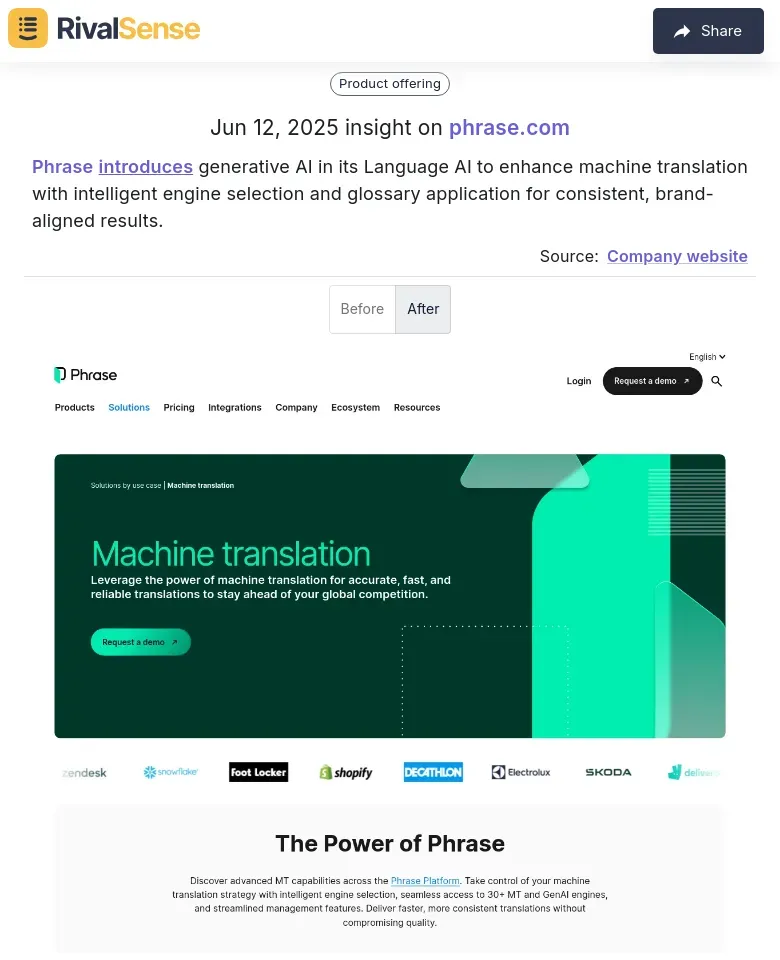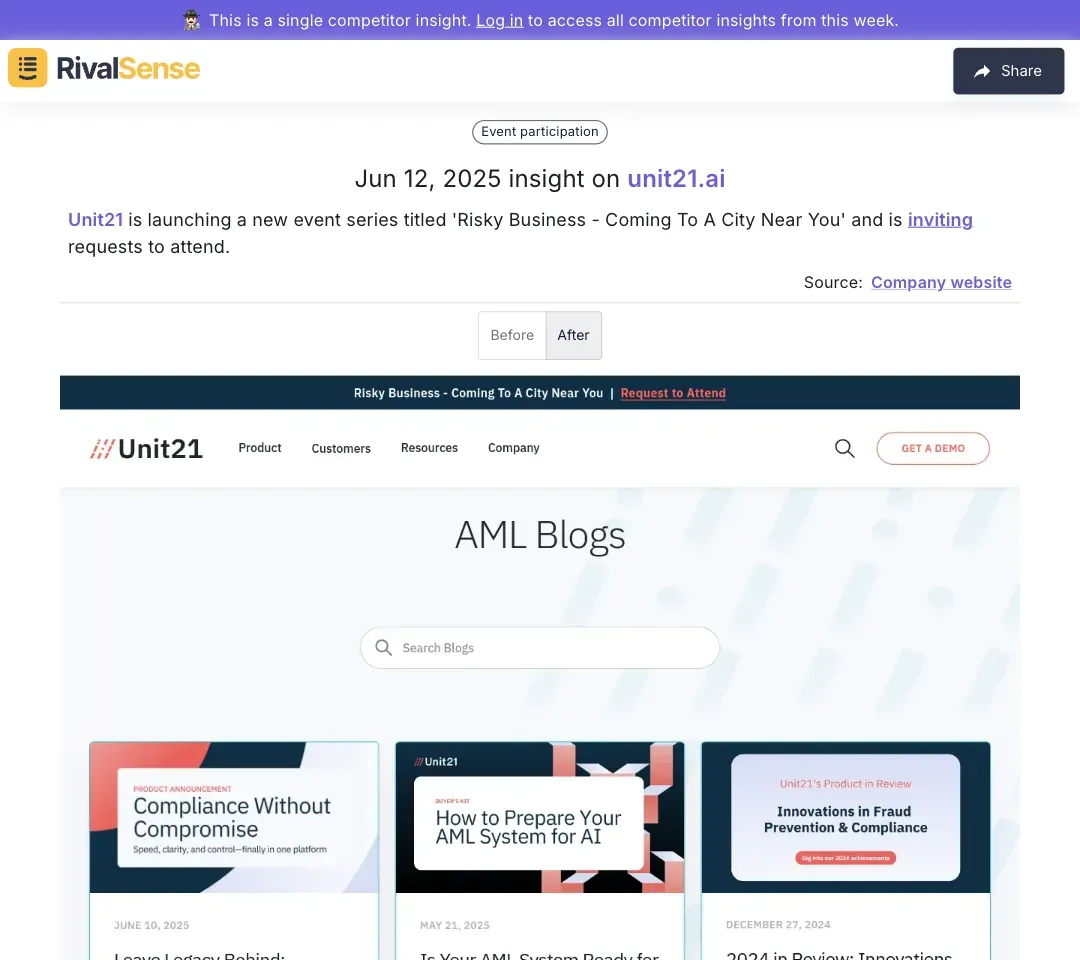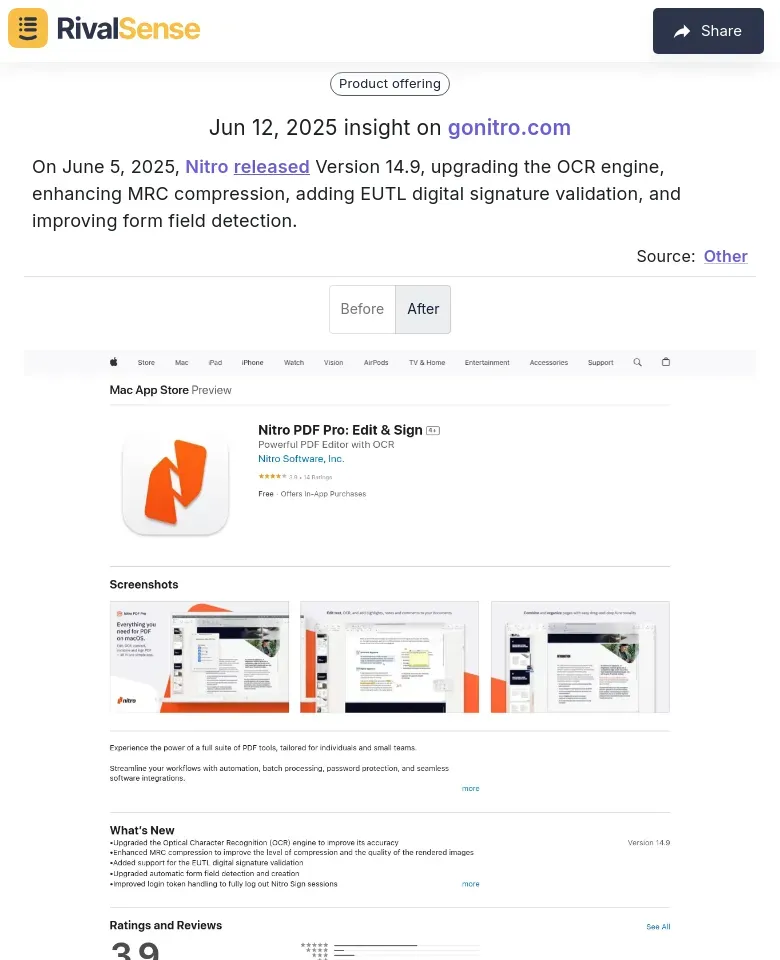How Website Changes Reveal Competitor Talent Strategies
In today's hyper-competitive business landscape, intuition alone won't keep you ahead—actionable intelligence is non-negotiable. Competitor websites serve as transparent windows into their strategic priorities, especially regarding talent acquisition and organizational development. These digital footprints reveal real-time adjustments to market demands and internal goals through subtle yet telling changes.
Why focus on websites? They're dynamic reflections of a competitor's evolving strategy. A revamped careers section, updated leadership bios, or new technical job postings can signal everything from market expansion plans to skill gaps. By monitoring these digital cues, you gain foresight into competitors' moves before public announcements.
🔍 Key changes to monitor:
- Job Postings: Repeated hires for specific roles indicate strategic growth areas
- Leadership Updates: Executive team changes hint at organizational pivots
- Content Shifts: New case studies reveal market priorities
- Design Overhauls: Website redesigns often precede major rebranding
✅ Actionable Framework:
- Implement automated website monitoring tools
- Conduct weekly career page audits
- Track thematic patterns in blogs/press releases
- Document changes monthly to identify trends
Product Enhancements and Technological Advancements
Technological upgrades directly reflect talent investments and strategic direction. When competitors announce new AI capabilities or cloud migrations, they're telegraphing their skill acquisition priorities. These developments often require specialized hires months before launch, making them leading indicators of talent strategy shifts.
Consider how RivalSense tracked this strategic move:

Phrase introduced generative AI in its Language AI platform, enhancing machine translation through intelligent engine selection—signaling heavy investment in NLP talent.
Understanding such product developments helps anticipate skill demand surges in your industry. Product enhancement insights reveal:
- Emerging technical competencies competitors value
- Timeline correlations between hiring spikes and feature launches
- Investment priorities in specific technology stacks
📋 Decoding Tech Signals:
| Analysis Focus | Strategic Insight |
|---|---|
| Feature complexity | Required talent specialization |
| Release frequency | R&D team capacity |
| Tech stack choices | Infrastructure talent needs |
Event Launches and Community Engagement
Competitor events function as talent magnets and brand positioning tools. The format, location, and themes of conferences or workshops reveal targeted audience segments and expansion plans. A sudden focus on developer events? They're likely courting engineering talent. Regional roadshows? Geographic growth ahead.
Notice how RivalSense captured this strategic initiative:

Unit21's 'Risky Business' event series signals focused community building—a talent strategy aiming to attract compliance professionals through thought leadership.
Event insights provide invaluable intelligence because they:
- Reveal untapped talent pools competitors target
- Showcase employer branding approaches
- Indicate geographic or functional expansion
✅ Engagement Analysis Checklist:
- Track event frequency and formats (webinar/workshop/conference)
- Map event locations to expansion roadmaps
- Analyze speaker profiles for talent priorities
- Monitor social engagement (shares/comments/attendance)
Version Releases and Operational Improvements
Software updates serve as public R&D diaries, documenting technical investments and operational priorities. Major version releases often correlate with preceding talent acquisition—like hiring machine learning experts before AI feature launches. Operational upgrades (faster processing, better security) similarly reflect specialized team growth.
RivalSense detected this revealing update:

Nitro's v14.9 release with enhanced OCR and digital signatures shows investment in document processing talent—valuable for anticipating competitive shifts in SaaS capabilities.
Version tracking matters because it:
- Uncovers hidden technical hiring before job posts appear
- Reveals operational weaknesses competitors are addressing
- Provides benchmarking data for your product roadmap
🔍 Release Analysis Framework:
- Decode technical requirements behind new features
- Correlate release timing with past job postings
- Assess customer impact through review analysis
- Benchmark against your development velocity
Brand Messaging and Consistency
Language evolution on competitor websites signals cultural and operational shifts. Standardized terminology, new glossary sections, or tone adjustments often precede organizational changes. A sudden focus on "innovation" or "customer-centricity" in web copy may indicate upcoming structural realignments or hiring philosophy changes.
Consistency audits reveal how competitors position themselves to talent markets. Inconsistent messaging across career pages and product sections suggests internal misalignment—while polished uniformity indicates strong employer branding. Track these linguistic patterns to anticipate recruitment messaging shifts.
✅ Messaging Audit Checklist:
- Quarterly brand voice consistency reviews
- Competitive terminology comparison reports
- Cross-departmental language alignment checks
- Career page vs. product page tone analysis
📌 Pro Tip: Monitor About Us page changes—they're often revised before major hiring initiatives or cultural overhauls.
Conclusion: Turning Insights into Action
Competitor website changes provide unparalleled visibility into talent strategies before formal announcements. From job postings signaling growth areas to product updates revealing technical hiring, these digital footprints enable proactive strategy adjustments. Consistent monitoring transforms reactive guessing into predictive intelligence.
Implement these steps to operationalize insights:
- Establish automated tracking for key competitor pages
- Create change logs with monthly trend analysis
- Align findings with your talent acquisition planning
- Develop response playbooks for common competitor moves
Ready to decode competitor strategies?
Try RivalSense Free to automate competitor tracking and receive weekly intelligence reports—get your first competitor analysis today!
📚 Read more
👉 Benchmarking Payment Leaders: Worldline's Market Intelligence Edge
👉 5 Product Offering Mistakes When Tracking Competitor Promotions
👉 The Power of Timely Information: How to Stay Ahead in Business
👉 Decoding Citadel's Commodities Tech Stack Shift: Strategic Implications
👉 Citadel's Risk Platform Centralization: Insights & Competitive Response Tactics
